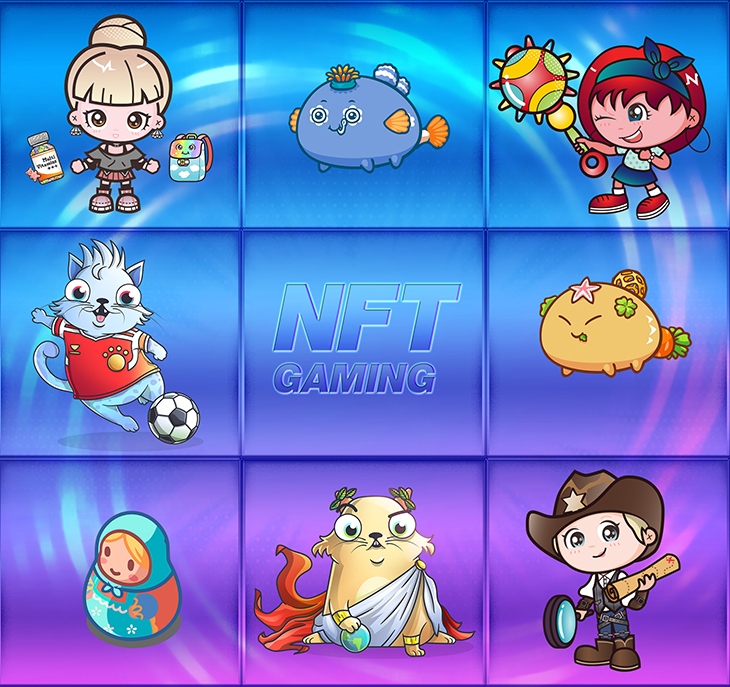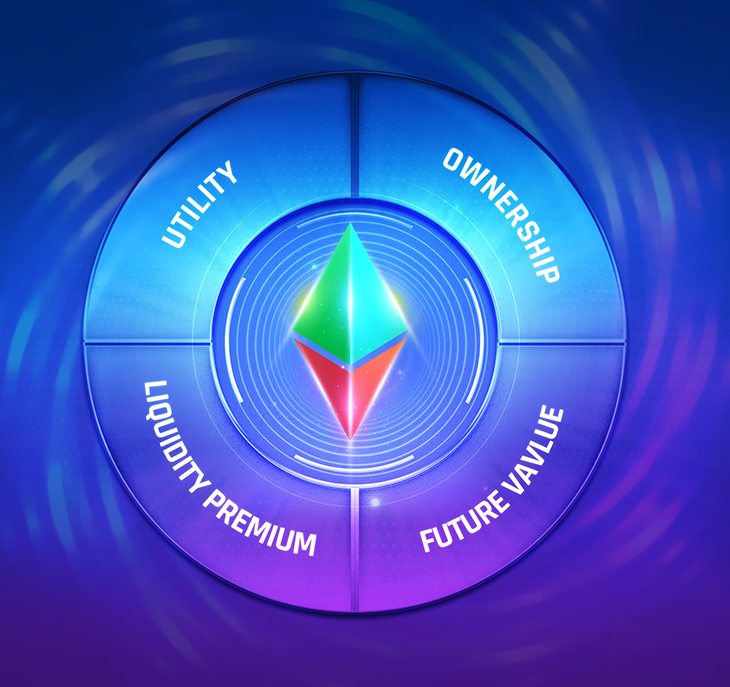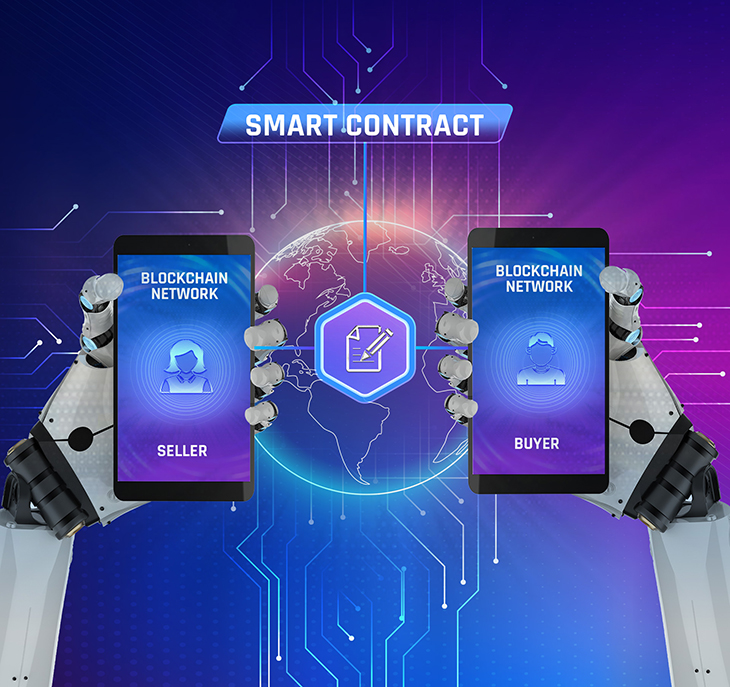The rise of Non-fungible tokens in the crypto markets has been somewhat stellar given its slow beginnings. With a market cap of $15.3b today, they represent digital assets that can't be remade or broken up into something else. As such, NFTs have come to play an integral role in the world of art, music, and now, even in crypto-driven NFT games. Created and stored on the blockchain, they're euphorically similar to how certain collectibles have always existed in traditional and digital games. Still, they can also serve purposes other than those already defined – as the market evolves.

The market value of Non-Fungible Tokens (NFT)
A variety of factors influence the adoption rates of NFTs. Based on the context they've been made, how it connects to a popular field, among others, pushes NFT trading. In this regard, an essential factor that drives circulation in the market is the value that gets decided and attributed to these tokens:
- 1. Utility: The utility value of a token depends on how it can be used in today's world. Currently, NFTs that have been made highly viable are those made as game assets and tickets. However, more than as a collectible, if NFTs can be used to propel daily activities, then the usability of those tokens can impact its value. Also, if those tokens can be used in a different application, then the tokens value and utility will also go up.
- 2. Ownership: Much of the value of these tokens, mainly collectibles, can also be attributed to their ownership history. That is, the identity of the NFT's issuer and who all have previously owned it. In this way, the NFT trading value depends on which famous artist or popular brand has released said tokens. For instance, an NFT of a Formula 1 car titled '1-1-1', created in partnership with Formula 1, was purchased for $110,000 by Metakovan. When asked why, Vignesh explained that the 'Branded NFT' is what had first caught his eye.
- 3. Future value: What the value of an NFT will be in the future is decided by the further valuation of those tokens. In turn, this is driven by the scarcity of NFT crypto assets and speculation. The performance of an NFT token on the charts, the interest or royalties earned by the creator – are some examples of the factors that can affect the future value.
- 4. Liquidity premium: Whether a person is purchasing a token for NFT games or trading and holding as a collectible, high liquidity will always ensure that the value of that token also remains high and stable. That it doesn't plummet and as such, poses less of a risk to investors and buyers. NFTs created using ERC standards can be traded easily on other markets, thus having higher liquidity and, consequently, a higher value.

Non-fungible tokens are primarily valued in the market because of these four components. As security standards go, NFTs are pretty safe because of their encrypted nature. Still, it can be helpful to consider these factors, while investing in them in the future.
NFT trading collectibles in the gaming economy
Non-fungible tokens in games are quite different from the average collectible gamers have perhaps grown up with. For instance, Magic: The Gathering used to be quite a popular card game that used to be played before. Apart from 'duelling' with other players, people also collect them for various reasons. One such MTG card illustrated by Christopher Rush was sold this year in January for $511,000. If anyone wanted, they could still play the game with that expensive collectible.
- * Collectibles in NFT games, in a similar manner, might rarely reach such a high price. However, they still function as unique assets of a game and can be used to play it.
- * With a proven origin or history of an NFT's ownership, blockchain allows for such collectibles to be traced back to when it was created and who has owned them. This can affect the value of particular NFTs, as they can appreciate or depreciate based on such facts.
- * Borne of the technology of 'Smart contracts,' NFT crypto collectibles can also experience a change in the information they serve as a game asset. For instance, the characteristics or attributes of a digital card shooting up or down, based on the game's rules it is used in. This can further affect their value in the eyes of other players or the marketplace.

NFT trading collectibles, going from what's described above, can have a sort of dynamic role in each game's economy. So, despite being unique assets held only by players once created, they will still be programmable and an essential part of the gameplay. And, if Andrew Steinwold's recent survey gives life to this picture, a small player-base of just 96 users was inclined to invest a whopping +$1.9m on NFTs alone!
Decentralized gaming: Made possible
Particularly in gaming, NFT trading serves to solve many of the legacy issues of gaming that players feel or express. The most important one of these being the whole centralized structure of games that they get to play. Everything, from in-game assets to digital currency and even character's attributes, etc., are all owned and managed centrally by the game's developers.
- 1. Replacing virtual items: Now, players can already either buy or earn virtual items in many games across various genres that change how the game either plays for them or looks like. NFT games enable players to own these virtual items – digital assets individually-while also playing the game as it was intended.
- 2. Bending the economy: A positive effect of this manner of decentralized gaming is that player-to-player exchanges would shift the control over the game's economy to a free market and the players. NFT games, in particular, would no longer have the game designer being the ones who regulate trades, have a monopoly over assets, and behave like the central banker.
- 3. Redevelop when required: Game developers needn't be afraid of having to incorporate NFT crypto into their work, a pre-existing game or one that's currently up and running. Once they've gotten around the learning curve of managing the back end of their systems, the game can still function as it was intended to. In addition, because of how NFT trading in games has more to do with ownership than the game's actual rules, game designers needn't worry about the balance or various functionalities within the game being affected.
In this manner, the advent of NFT crypto has seriously made decentralized gaming a possibility. The economy is regularly affected by what value players across the world attribute to these unique, digital assets. It does pose a risk as the supply, demand, and exchange factors in a game are more loosely controlled, but it can certainly expand the universe of online games – for the better, rather than disrupt it – for the worse.



